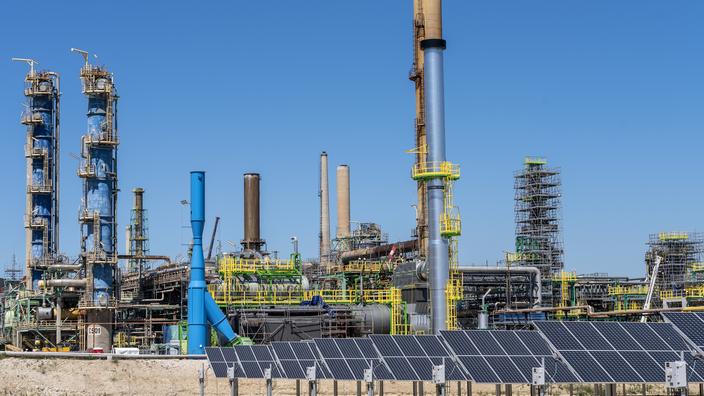Based in Rotterdam, the Netherlands, the biorefinery of the Finnish company Neste produces biofuels from renewable resources.
Alongside this Scandinavian company and within a European consortium, ENGIE will participate on this site in the management of a high-temperature electrolyser of several megawatts which will be installed in 2021 and will generate renewable hydrogen, to produce biofuels of high quality.
A world first to avoid 8,000 tonnes of greenhouse gases by the end of 2024.
ENGIE acts for the environment by deploying partnerships of this type with its customers.
The group therefore offers concrete solutions to help manufacturers achieve their objectives in terms of reducing their carbon footprint.
In fact, the hydrogen obtained by electrolysis of water using renewable electricity (wind or solar) decarbonises entire areas of our economies.
Companies in the manufacture of fertilizers, refining, steel or cement are planning to replace carbonated hydrogen, produced from natural gas or methane, with renewable hydrogen.
The Norwegian chemist Yara therefore turned to ENGIE to convert its ammonia production site located in Pilbara, Australia, to renewable hydrogen.
In this region benefiting from a wealth of sunshine, a 10 MW solar power plant will supply energy to an electrolyser which will operate from 2023, on condition that the necessary public funding is obtained.
In France too, an energy and industrial alternative to protect the environment
Closer to home, in Provence, ENGIE has entered into an ambitious partnership with Air Liquide and the Durance-Luberon-Verdon agglomeration (DLVA), aiming to produce several tens of thousands of tonnes of renewable hydrogen per year at from solar energy.
It must be marketed to steelmakers, chemists and refineries in the region wishing to replace it with carbonaceous hydrogen.
They will thus be able to reduce their CO2 emissions.
ENGIE's ambitions in the south of France do not end there.
The leader in the energy transition has just signed a cooperation agreement with Total to build the largest renewable hydrogen production site in France.
It will be located at the heart of the La Mède biorefinery in Châteauneuf-les-Martigues, which produces 500,000 tonnes of biodiesel per year.
A 40 MW electrolyser producing 5 tonnes of renewable hydrogen per day will prevent 15,000 tonnes of annual CO2 emissions.
La Mède is the first global biorefinery in France and one of the largest in Europe.
“With green hydrogen, we are convinced that we can scale up with the development of concrete projects for industrial uses
,
”
comments Claire Waysand, Deputy CEO of ENGIE.
However, the price of renewable hydrogen remains higher than carbon dioxide.
The projects will need financial support and shared investments to support the development of the sector until the market matures.
Another example, this time in the South-West: in Saillat-sur-Vienne, in New Aquitaine, ENGIE operates a cogeneration installation with a capacity of 12 MW which produces steam for the needs of the recycled paper manufacturer Smurfit Kappa.
Within a European consortium, the group is participating in the development of the world's first “power-to-X-to-power” demonstrator, a technology that transforms electricity into another energy carrier in order to store energy. energy for later use.
In this case, on this project, hydrogen is used as the “X” vector.
This project aims to prove that hydrogen can be produced from surplus renewable electricity, stored on site and then mixed with natural gas to power a high-power industrial turbine.
The goal is for the entire site to run on hydrogen.
Finally, while Energy Observer, of which ENGIE is a partner, continues its Odyssey around the planet, the industry sector can draw inspiration from the innovations of the first hydrogen vessel.
Energy Observer has indeed launched a subsidiary, EODev, intended to industrialize sustainable energy solutions where hydrogen will play a key role.
The company markets, for example, an electro-hydrogen generator which replaces the conventional diesel generator.
Through its various initiatives, ENGIE intends to help its industrial customers to negotiate the energy transition as effectively as possible.

